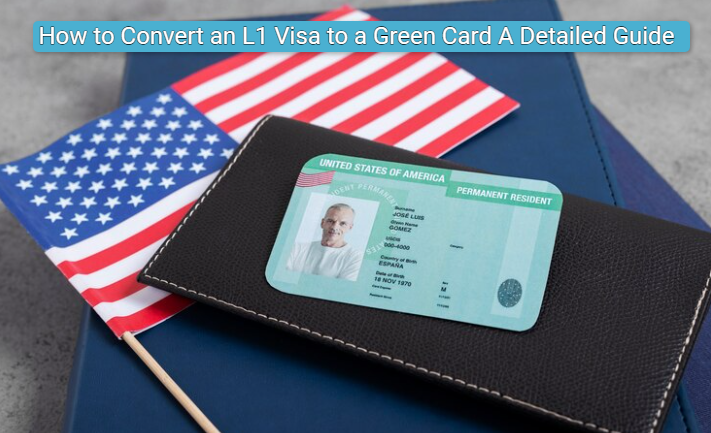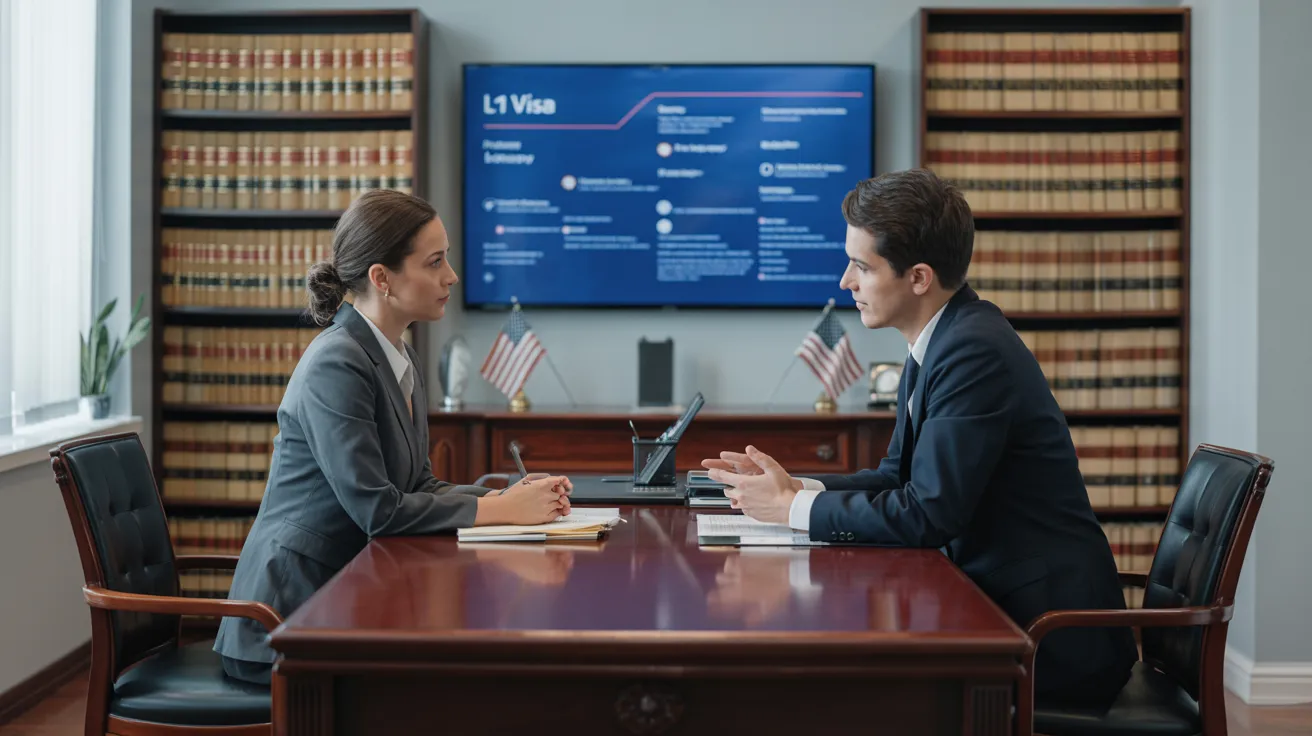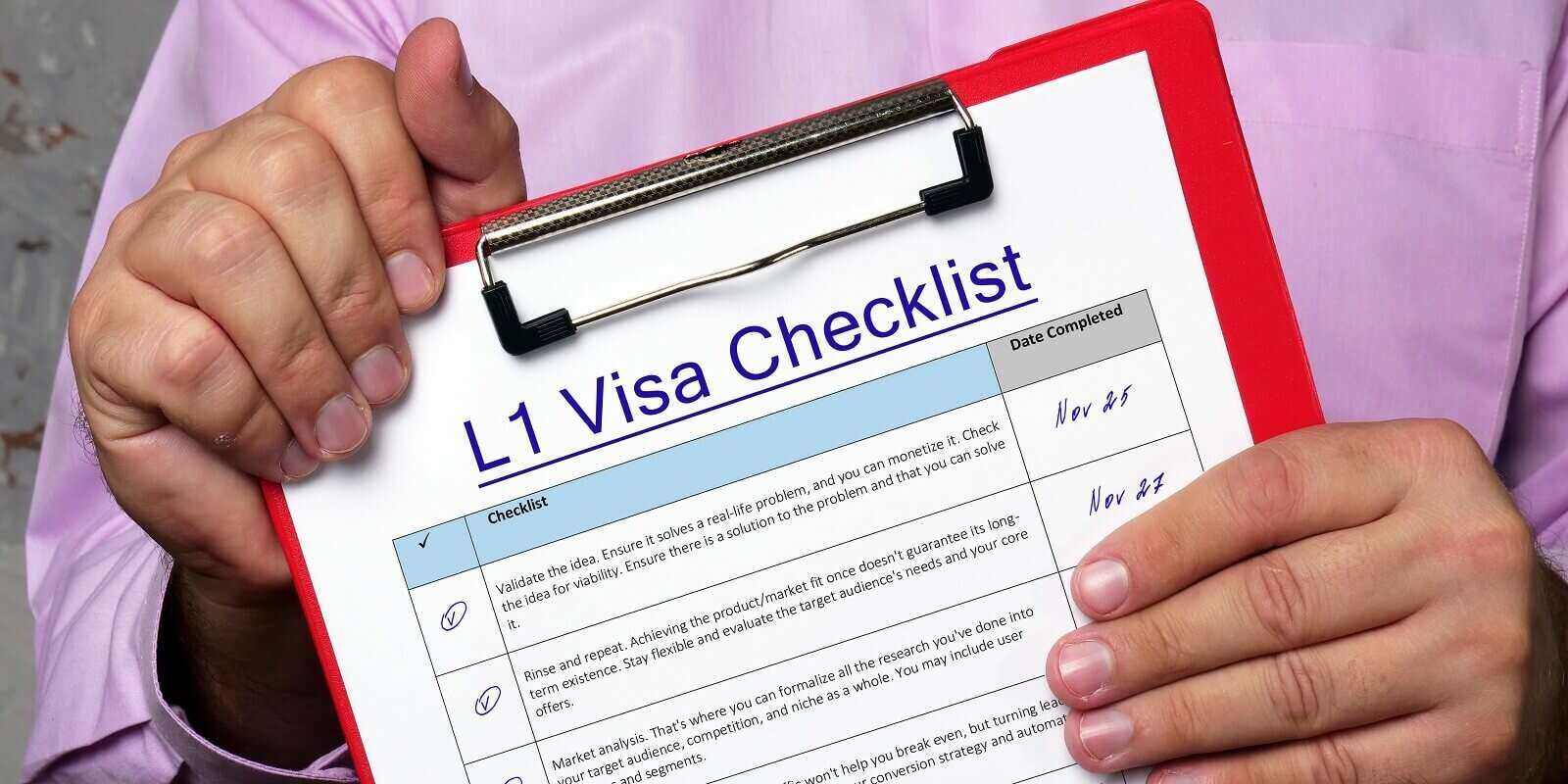Optimize Your International Reach: The Advantages of the L1 Visa for Multinational Firms
The L1 visa acts as a crucial instrument for multinational firms looking for to enhance their international operations by facilitating the effective transfer of key workers across borders. This visa not only alleviates administrative hurdles such as labor certification but likewise fosters a culture of collaboration and development within diverse groups. As companies navigate the complexities of global markets, comprehending the one-of-a-kind benefits of the L1 visa becomes necessary. Nevertheless, the effects of its use prolong beyond plain comfort-- what strategic possibilities might occur from leveraging this visa properly?
Comprehending the L1 Visa
Several multinational companies take advantage of the L1 visa as a critical tool for moving employees in between worldwide branches. The L1 visa, specifically created for intracompany transferees, makes it possible for companies to relocate vital workers from consular services to their U.S. counterparts - L1 Visa Qualifications. This visa is especially helpful for companies that require to maintain functional continuity and improve their one-upmanship in the worldwide market.The L1 visa is split into 2 groups: L1A for supervisors and executives, and L1B for workers with specialized knowledge. The L1A visa enables qualified people to remain in the united state for approximately seven years, while the L1B visa stands for approximately five years. Among the defining features of the L1 visa is that it does not need a labor certification, which enhances the application process and reduces the moment and sources needed to bring skill to the U.S.Moreover, the L1 visa facilitates the transfer of expertise and proficiency, fostering a cohesive business society across global branches. This visa type also permits the spouse and youngsters of the L1 visa owner to accompany them to the United States, thereby offering added family assistance throughout the shift
Advantages of Staff Member Transfer
Transferring staff members across global boundaries offers substantial benefits for international companies. The L1 visa promotes this procedure by permitting companies to relocate knowledgeable workers from consular services to U.S. locations, thus enhancing functional efficiency and cultivating a unified corporate culture.One of the key advantages of employee transfer is the retention of institutional knowledge. Workers that have actually been with the company for an extended duration have a deep understanding of the business's operations, products, and worths. Transferring these individuals aids preserve connection and security within the company, guaranteeing that critical experience is not shed throughout growth efforts.Additionally, employee transfers advertise cross-cultural partnership, which is necessary for fostering innovation and adjusting to diverse markets. When workers from different histories interact, they bring special viewpoints that can lead to innovative services and boosted analytical. This diversity can likewise boost the firm's track record and charm in international markets, as it shows a dedication to inclusivity and adaptability.Furthermore, worker transfers can speed up the growth of leadership skills. When employees are exposed to different company settings and practices, they gain beneficial insights that add to their expert development. This not only profits the people involved however additionally reinforces the general capacities of the company.
Enhancing Workflow
Improving procedures is a crucial objective for multinational business seeking boosted operational effectiveness and a much more streamlined monitoring framework. The L1 visa assists in the transfer of vital personnel, enabling organizations to straighten resources and proficiency across borders properly. This calculated approach not just minimizes redundancy but likewise fosters a natural workplace that sustains total company objectives.

Enhanced Functional Effectiveness
Improved functional effectiveness is a crucial benefit for international companies utilizing L1 visas, enabling the seamless combination of international teams and resources. By promoting the transfer of essential employees amongst global workplaces, L1 visas make it possible for organizations to release specific skills where they are most needed, improving process and enhancing productivity.The ability to swiftly relocate staff members with expertise in details organization processes or innovations cultivates a much more active operational structure. This agility is especially valuable in resolving market demands, as groups can rapidly adapt to shifts in customer preferences or sector fads. L1 visa owners frequently bring beneficial insights from their corresponding markets, improving the firm's overall calculated approach.Additionally, the collaborative nature encouraged by the L1 visa system advertises knowledge sharing throughout borders. This harmonization of practices and requirements not only enhances functional effectiveness but also drives development, as varied groups take advantage of their distinct viewpoints to fix intricate problems (L1 Visa).Ultimately, the L1 visa functions as a necessary device for international companies seeking to optimize their operations, positioning them to prosper in a progressively affordable international landscape. The end result is a more cohesive and effective company capable of accomplishing its tactical purposes
Simplified Administration Framework
A streamlined administration structure is a considerable advantage for international firms leveraging L1 visas, as it facilitates more clear communication and decision-making processes throughout global workplaces. By permitting crucial workers to move effortlessly between places, the L1 visa helps keep a unified management framework. This comprehensibility is vital for aligning corporate methods and operational objectives, which can usually end up being fragmented in intricate worldwide settings.Additionally, the L1 visa enables firms to capitalize on the competence of their administration groups, making certain that the very same vision and criteria are maintained across various regions. This positioning minimizes the threat of miscommunication and cultivates a society of cooperation, as execs can engage straight with teams worldwide.Moreover, a structured monitoring structure enhances agility in replying to market modifications and functional obstacles. With a constant leadership visibility, companies can quickly execute calculated initiatives and adapt to regional problems while sticking to the total business strategy. The L1 visa not only optimizes monitoring performance but also contributes to a durable and adaptive worldwide service model, eventually driving success in diverse markets.
Enhancing Technology and Cooperation
In today's competitive business atmosphere, fostering advancement and partnership is important for international firms looking for to maintain their side. The L1 visa promotes this by enabling firms to move vital staff members, including supervisors and specialized understanding employees, from foreign offices to united state areas. This movement not just enhances the flow of concepts however additionally enhances cross-border synergy, allowing firms to leverage varied perspectives and expertise.By bringing in ability with one-of-a-kind insights from various markets, business can promote creative analytic and drive the growth of ingenious products and services. The L1 visa additionally urges the facility of worldwide teams that work together flawlessly throughout geographical limits. Such cooperation enables real-time sharing of best techniques and increases the execution of cutting-edge techniques tailored to particular local needs.Furthermore, the L1 visa promotes knowledge transfer within companies. Employees on L1 visas can share their specialized abilities and training with neighborhood groups, cultivating a society of continual learning and improvement. This exchange of expertise not only improves the abilities of the workforce however also grows an environment where technology can prosper.

Browsing Regulative Challenges
Steering through the regulative landscape is vital for multinational companies using L1 visas, as understanding visa demands is the initial step in making certain conformity. Additionally, companies should align their procedures with regional legislations to stay clear of potential legal pitfalls. Effectively taking care of immigration procedures not just streamlines labor force flexibility yet additionally reduces risks related to non-compliance.
Recognizing Visa Needs
While securing an L1 visa can substantially benefit international business, comprehending the details requirements and guidelines is vital to stay clear of potential risks. The L1 visa is designed for employees of international companies that are being transferred to a united state workplace. To qualify, the worker must have helped the business abroad for at the very least one constant year within the preceding 3 years in a supervisory, executive, or specialized understanding capacity.Moreover, the requesting organization should show that it has a certifying relationship with the international entity, such as being a parent company, branch, subsidiary, or associate. This includes providing documents that validates the business structure and functional connections in between the entities. It is additionally important to guarantee that the U.S. office satisfies the required physical room and staffing needs to sustain the brand-new staff member's role.Failure to adhere to these regulations can lead to delays or denials of visa applications. Therefore, companies must engage certified legal guidance to assist in steering through the complicated governing landscape bordering L1 visa applications, assuring that all needed documentation is accurately prepared and sent.
Compliance With Local Laws
Conformity with regional legislations is an important element for international business running in the U.S., especially when it comes to L1 visa owners. These business have to understand the complex regulative landscape that governs employment practices, taxes, labor legislations, and immigration. Understanding these guidelines is crucial to prevent legal risks that could endanger their operations.L1 visa holders, regularly moved from consular services, should follow both government and state laws. This includes making sure appropriate employment category, adhering to wage and hour regulations, and abiding by job-related safety and security policies. Companies should additionally bear in mind regional labor regulations that may vary markedly from those in their home countries, requiring an extensive review of policies and practices.Furthermore, multinational companies must preserve accurate documents and documents to demonstrate compliance during prospective audits. Involving local legal experts can offer very useful understandings into maneuvering these governing obstacles. By focusing on compliance, companies can reduce risks, enhance their track record, and foster a stable functioning environment for L1 visa holders, ultimately contributing to their lasting success in the united state market.
Managing Immigration Processes
Efficiently taking care of migration procedures is a regular challenge for multinational companies, specifically when dealing with L1 visa applications and renewals. The complexities of U.S. migration regulation call for organizations to stay informed concerning governing adjustments that can influence their procedures. This is specifically critical for business moving staff members from international offices to U.S. branches, as any bad move can lead to hold-ups or rejections that prevent service objectives.To navigate these difficulties effectively, companies need to establish a robust migration method that includes clear standards for paperwork, timelines, and compliance needs. Engaging skilled migration advice can help simplify the application procedure, making sure that all necessary documentation is submitted L1 Visa properly and timely. In addition, firms ought to keep open lines of communication with staff members regarding their visa standing and any type of adjustments in migration policies that can impact their role.Regular training for human resources employees on immigration regulations can better improve a company's capability to manage these procedures effectively. By proactively addressing the intricacies of L1 visa monitoring, multinational firms can lessen interruptions, retain leading talent, and inevitably support their international growth efforts.
Comparative Evaluation With Various Other Visas
When thinking about visa alternatives for worldwide assignments, the L1 visa provides distinct advantages over various other sorts of job visas, such as the H-1B or O-1 visas. Primarily, the L1 visa is created especially for intra-company transferees, allowing international firms to transfer workers from consular services to united state branches seamlessly. This tailored method assists in functional connection and knowledge transfer, which is typically vital for worldwide business strategies.In contrast, the H-1B visa requires companies to demonstrate that there are no certified U.S. workers for the position, causing a lengthy application process based on annual caps. This can hamper timely projects, whereas the L1 visa is not subject to such restrictions, offering quicker access to proficient workers. Furthermore, L1 visa holders are not restricted to a specific job duty, permitting better adaptability in readjusting roles within the organization as business needs evolve.The O-1 visa, which is designated for people with phenomenal capability in their area, while advantageous for highly specialized duties, does not satisfy the wider workforce needs that numerous international firms have. On top of that, the strict eligibility criteria and documentation requirements can posture obstacles for companies looking for to move key employees.
Success Stories of L1 Visa Use
The L1 visa has actually made it possible for countless international companies to enhance their global procedures by facilitating the smooth transfer of vital employees to U.S. offices. This visa group has actually been particularly useful for firms seeking to increase their footprint in the affordable American market.One noteworthy success tale is that of Infosys, an Indian multinational firm that offers business consulting, infotech, and contracting out services. By leveraging the L1 visa, Infosys has actually successfully transferred its elderly executives and specialized expertise workers to its U.S. areas, allowing the business to better serve its diverse client base while promoting innovation and collaboration.Similarly, the German vehicle giant BMW has made use of the L1 copyright bring talent from its worldwide branches to its united state production centers. This method has assisted the company enhance operations and assurance that its manufacturing processes stick to the greatest criteria of high quality, more solidifying its setting in the affordable automobile sector.Another instance is the multinational modern technology firm SAP, which has properly utilized the L1 copyright move its software advancement professionals from its international workplaces to the U.S. This has not only accelerated product development cycles however has likewise allowed SAP to touch right into the American market's one-of-a-kind demands and trends.These success stories emphasize the L1 visa's vital role in assisting in global business operations, enabling business to harness worldwide skill and drive innovation in the united state marketplace. As multinational firms remain to leverage this visa, they stand to obtain an affordable edge in their corresponding sectors.

Regularly Asked Questions
What Are the Qualification Needs for the L1 Visa?
The L1 visa qualification needs include employment with a qualifying organization abroad for at the very least one continual year within the last 3 years, and the candidate needs to be moving to a supervisory, exec, or specialized knowledge position. (L1 Visa)
For how long Is the L1 Visa Valid For?
The L1 visa is at first valid for one to three years, depending upon the certain category. It can be expanded in increments, enabling an optimum keep of as much as 7 years for L1A and 5 years for L1B.
Can Family Members Accompany L1 Visa Holders?
Yes, relative of L1 visa owners, consisting of spouses and unmarried children under 21, can accompany them to the United States (L1 Visa). They might request L2 visas, which enable them to live and examine in the country
What Is the Application Process for the L1 Visa?
The L1 copyright procedure entails sending Type I-129, supplying sustaining documents, and paying the called for fees. Approval is contingent upon demonstrating a qualifying connection between the united state and international entities, in addition to employee eligibility.
Are There Any Kind Of Limitations on Task Duty for L1 Visa Holders?
L1 visa owners deal with particular limitations concerning job duties, largely needing settings to be supervisory, exec, or involve specialized knowledge. Conformity with these criteria is necessary for maintaining visa validity and making certain appropriate employment classification.
Verdict
To sum up, the L1 visa acts as an important instrument for international business seeking to enhance their global operations. By facilitating the transfer of staff members, this visa boosts understanding retention, operational efficiency, and cross-border collaboration. The absence of labor certification needs and annual caps streamlines the relocation procedure, making it possible for business to adjust quickly to market dynamics. Inevitably, the L1 visa considerably adds to a company's competitive benefit in the progressively interconnected global economic situation.